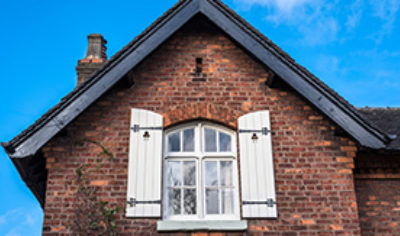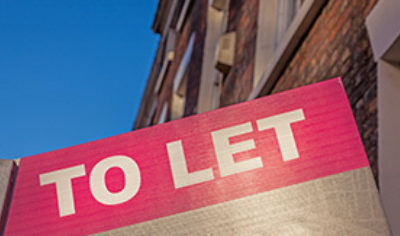Home Alarm Systems
Installing an alarm system at your home, may give you extra peace of mind and may also qualify you for a discount from your home insurance premium. But what sort should you install and who should carry out the installation for you? There are a variety of home alarms on the market, and here we attempt to explain the different types available. First, it is worth remembering, that if you are thinking of installing an alarm because you require a discount from your home insurance premium, that’s not all alarm systems will qualify you for a discount. In many cases, particularly where you have a high sum insured in respect of contents, your insurer, may want you to have a certain type of alarm installed and you should thus discuss the matter with them, before installation is carried out.
Before we start to discuss the various home alarms available, it is worth pointing out that most thieves are opportunists, often they will pass by a house that seems to have good quality, security systems in place. Every extra security feature at your home will help provide a deterrent and even a dummy alarm box fitted to a wall, provides a good visible deterrent, in many cases, this is enough to deter a burglar and make him consider moving on to another property.
Types of Home Alarms– Home Alarm Systems generally fall into two groups; Group A & Group B. If we start with Group B alarms, as these are the most basic and include ‘ Bells only” devices which many homeowners will consider within their capabilities to fit themselves. There are a large number on the market, and in fact most DIY stores will sell a system, which you can quite easily install your self. The kits will usually come with a control panel, door and window sensors and a nice brightly coloured box with a bell alarm for affixing to the outside of your home. These basic alarms are simple and inexpensive, they are not monitored and are designed to make a noise and hopefully frighten the burglar away. Some of these systems now come with a dialler option, this will send a text message to your phone if the alarm is triggered, It is then up to you to decide what to do about it. You can of course choose to have this type of alarm professionally fitted but unless the company you choose is accredited, then the level of police response you may obtain will be very limited.
If you want anything more sophisticated than bells only and you require it to be monitored, you will need to employ the services of a professional installation company. These will fit alarms that can be classified as Group A. One of your first considerations before hiring a company is to ascertain if they are in fact accredited. The four Inspectorates in the United Kingdom are; the National Approval Council for Security Systems (NACOSS), the Security Systems and Alarm Inspection Board (SSAIB), Alarm Inspectorate Security Council (AISC) and Integrity 2000.An alarm installer that is approved by one of these bodies, can install systems that are” monitored”- usually by a monitoring centre who if the alarm is triggered will notify you or the police depending on the type of service you have elected to have.
Why must an approved company fit a Category A Alarm? – police statistics show that in recent years over 92% of all alarm activations nationally have been false alarms, caused by user error or faulty equipment. The Association of Chief Police Officers England, Wales & Northern Ireland (ACPO) and the Association of Chief Police Officers Scotland (ACPOS) thus decided that in view of the amount of resources being wasted in dealing with these false alarms, they would need to move towards a system where by they would only reply to alarms where it had been confirmed, an incident was probably taking place. These associations then decided that only certain types of alarms fitted by certain manufactures would be approved and that the systems would have to have Confirmed Alarm Technology, incorporated within their design. Confirmed Technology ensures that that 2 signals must be sent within a 30 to 60 minute period, before the monitoring station will ask the police to attend.
If you have an alarm, or are buying a home that already has an alarm fitted and the device was installed prior to the 1st October 2001, providing your property is within England, Wales & Northern Ireland, you will retain the right to pass unconfirmed alarms to the police, until such time as they withdraw the response, after which an upgrade to include confirmed alarm technology will be required if you want the police to resume responses. Response is usually withdrawn after a number of false alarms.
After this date, all new intruder alarm systems are required to be installed with confirmed technology, this applies in England, Wales and Northern Ireland, in Scotland it is only recommended to do so and is not mandatory. Also Alarm systems monitored by independent companies and installed after 1st October 2005 that require police response must conform to PD6662:2004 standard and the latest edition of DD243
The ACPO have devised a method of dealing with alarm calls, depending on the type of device fitted and the previous number of ‘False Alarms’ logged., They call this the ACPO Unified Intruder Alarm Policy and it has been designed to cut down the wastage of police resources. Response varies depending on the type of equipment you have.
Type A – Remote Signalling Alarms – these are mainly alarms that signal an Approved Central Monitoring Stations when the alarm is triggered. These are often referred to as ‘Central Station Alarms’. The monitoring is usually carried out by the installation company. They must be maintained and used in accordance with British Standard 4737, BS 7042 (high security systems) or BS 6799 Class VI (wire-free alarms). Current Police policy require that you can provide two ‘key holders’ who have been trained to operate your burglar alarm, are reachable by telephone, to attend the premises at any time, are able to access the whole of the premises and can attend the scene within 20 minutes if so required. It should be remembered that the police have been known to withdraw response following persistent failure of key holders to attend within 20 minutes.
Often, when installing these alarms there is a delay as the installation company seek police approval for the property. The police have to provide a registration number and the alarm is allocated a Unique Reference Number ( URN). With these devices, if activated, the police will assume that an incident is taking place, they will attend as quickly as possible but of course other incidents may take precedent and on some occasions, they may be limited by manpower. The actual response you receive will depend on a number of factors. If you have had any false alarms in the previous 12 months period, police response to your home may be lowered. The policy have devised a’ Level” system where they will attend you property based on these factors
LEVEL 1 – Immediate Response. In England, Wales & N/Ireland – 1-2 false calls will probably result in a downgrade of the service whilst in Scotland, they are a little tolerant 1-4 false calls will be considered.
LEVEL 2 – Police attendance may be delayed due to other priorities- In England, Wales & N/Ireland,after 2 false call you are likely to be downgraded whilst in Scotland it is after 4 calls.
LEVEL 3 – Police response is withdrawn and usually a written letter is sent to the Key-holder.
These are subject to review and change and may vary from area to area, you will need to frequent yourself with the rules that apply to your own location.
It is worth pointing out at this juncture, that with many high net worth homes, the insurance company will insist that an alarm system is in operation at the premises and that the level of response is kept at a certain level. If you receive instruction from the police that you response level has been reduced and you fail to tell your insurance company, you may find your cover is compromised.
Type B – Audible Only Alarms you wont be able to expect much Police Action if you have one of these devices fitted. Unique numbers are not provided and of course the bulk of devices are not even monitored. If you want the police to attend, you are going to have to rely on independent confirmation ( such as a neighbour) calling the police to confirm that an incident is taking place.
For a Home Insurance Quote contact Assetsure. We are able to offer insurance for a wide range of UK property types including nonstandard construction

























